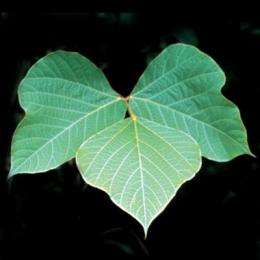US Forest Service research used in new, invasive-plant software

U.S. Forest Service research and funding have led to the development of a free software application that will help people identify and control destructive invasive plants in Southern forests and grasslands.
Development of the application is part of the Forest Service's multi-faceted strategy to reduce the impact of nonnative species – animals, pathogens and plants. These foreign invaders deplete water supplies, poison wildlife and livestock, and damage property in urban and rural areas at a cost of about $138 billion annually. Congongrass, nonnative privets, autumn olive and tallowtree are among the most common plants plaguing the South.
"Invasive plants are one of the greatest threats to our forests and grasslands," said Leslie Weldon, deputy chief for National Forest System. "They damage our environment and economy by destroying native trees and plants and limiting access to recreation areas. This new application provides an opportunity for more land owners, land managers and concerned citizens to join the fight in protecting our lands."
The Invasive Plants in Southern Forests: Identification and Management application is currently only compatible with Apple products – iPad, iPhone and iPod Touch – and available through iTunes. The software provides photos and information that allow users to identify the 56 nonnative plants and plant groups currently invading the forests of the 13 Southern states. Versions for other operating systems are being explored.
A grant from the Southern Research Station funded the application, which was developed by the University of Georgia Center for Invasive Species and Ecosystem Health. The software is based on Southern Research Station field and management invasive plant guides.
Like the guides, the app divides invasive plants into trees, shrubs, vines, grasses, ferns and forbs and provides identification keys, photos and management recommendations. App users also get simple, on-the-spot options for treating invasive plants.
Since their release, more than 200,000 copies of the Southern Research Station guides have been distributed. The plant app is expected to inform many more people about the impact of invasive plants and get them involved in eradication efforts.
"Ultimately we hope this app will give people a new tool to go out and identify invasive plants and map their occurrence," said Southern Research Station Research Ecologist James Miller, who co-authored the application's source guides. "Effective control relies on understanding of species including their biology, their preferred habitats, and how they spread across the landscape. Those are important first steps in stopping and containing the invasions of harmful nonnative plants."
Future versions of the application will include the ability to directly report new sightings of select species into the Georgia Center's Early Detection and Distribution Mapping System, which provides a quick way to submit photos and report new sightings of invasive plants on the spot throughout the United States.
Provided by USDA Forest Service
















